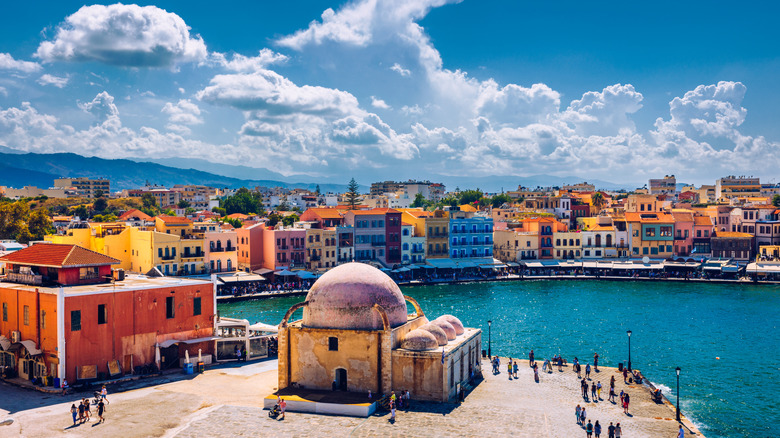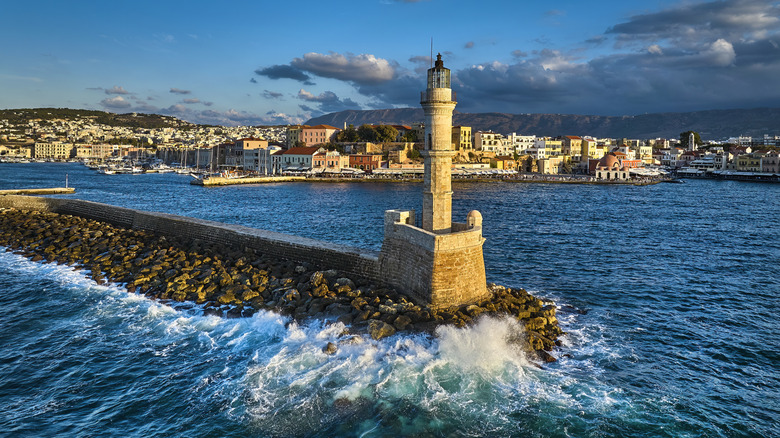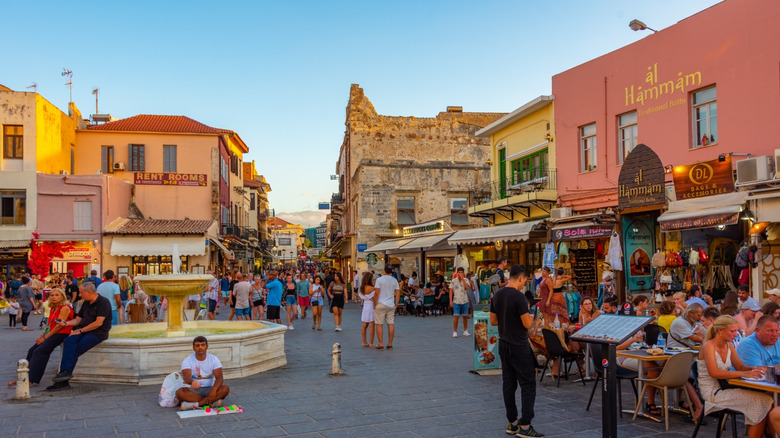One Of The Oldest Cities In Europe Is A Breathtaking Greek Island Getaway With An Atmospheric Old Town
An appealing location on the map has always been one of Crete's greatest assets, making it a quintessential getaway for sun, food, and beach. From the Romans to the Byzantines, the Venetians to the Ottomans, all have called the largest Greek island home at one point in history. Luckily for us, the vestiges of those societies remain in Crete's former capital of Chania, a breathtaking city with an atmospheric old town.
What's now called Chania began its global influence as the Minoan city-state of Kydonia, making it truly one of the oldest cities in Europe. Check out the Archaeological Museum of Chania to see artifacts from what many consider to be Europe's earliest organized civilization. Esteemed by Rick Steves as a way to enjoy Crete without swarms of crowds, the Samaria Gorge is likely the region's most famous site, just an hour away from downtown Chania. Hiking the trail takes about five hours, so plan a day around it, especially if you want to spend some time cooling off with a swim. But there is much to see without ever leaving the city.
Get around Chania's historic waterfront
If you arrive at the Chania port, rather than Crete's more heavily trafficked harbor in Heraklion, expect an overnight ferry journey from Athens of about eight and a half hours. You'll actually disembark in nearby Souda, then take a 15-minute bus or car trip to the historic city, built around the harbor.
Though the majority of the waterfront area was constructed in the 1300s by the Venetians, its influences are far more diverse. From the water, one of the first things you'll see is the striking Mosque of the Janissaries, or Küçük Hasan Pasha Mosque. Built in the 17th century, it's usually filled with art exhibits today. Across the bay, you'll spy the famous lighthouse. It's possible to walk the entire shore, all the way to the Lighthouse of Chania. Though originally built by the Venetians, it's sometimes called the Egyptian Lighthouse because the original version was restored in the mid-1800s by the North African troops who occupied Crete.
After taking in the historic architecture, it's best to return to the other side of the mosque to see what's officially known as Old Town, where the lion's share of sites are concentrated, among them the archaeological museum. On the far-west side, you'll find the Firkas Fortress, built in 1629 by the Turkish military. Contained within its fortified walls, the Maritime Museum of Crete includes displays that explain Chania's seagoing traditions reaching back to the Bronze Age. Don't miss Kastelli Hill, where you can still see the Byzantine ruins built over the original settlement of Kydonia.
Relax in Chania
There are plenty of reasons that Crete is among the best Greek islands to visit during the summer. Historically informed stays and exceptional food are among them. Hotels are concentrated along the harbor, translating to exceptional ocean views. Domus Renier is located inside a circa-1608 Venetian mansion. Once named the best historic hotel in Europe, the luxurious boutique lodging has 10 suites with water views. Prefer a hotel where you can get a facial? Casa Delfino Hotel and Spa is also a 17th-century private home that's been restored into a pocket-sized stay with 24 rooms.
Crete's esteemed cuisine is on offer at Tamam Restaurant, inside a 15th-century Venetian bathhouse. Start a meal there with homemade pies filled with local cheese or Cretan sausage, followed by fresh seabass in fennel and ouzo sauce. In the Old Harbor, try Neoria Fish Tavern. Spaghetti with lobster is one enticement, but try the fresh grilled, stuffed cuttlefish for something you likely won't find back home.
You'd be remiss not to start each day with a warm bougatsa, a crispy phyllo pie not unlike spanakopita, but filled with sweet cream instead. Get yours at Bougatsa Iordanis, where there's also a slightly savory version filled with local goat cheese but still dusted with sugar. The city's Old World charm is on offer with each bite. After a visit, you'll realize why Chania is far more than an appealing dot on the world map.


